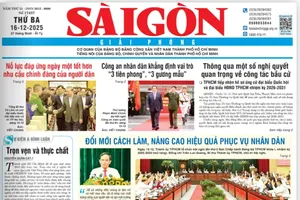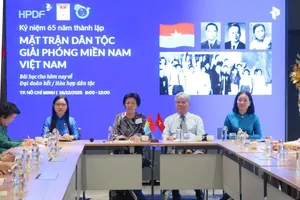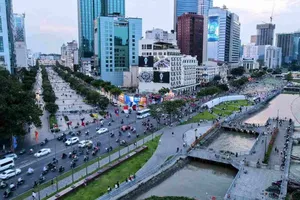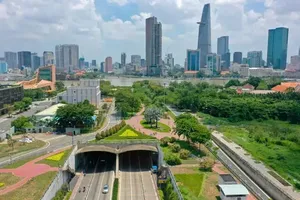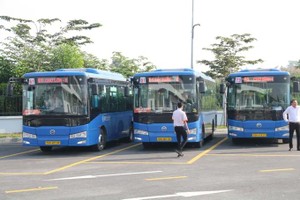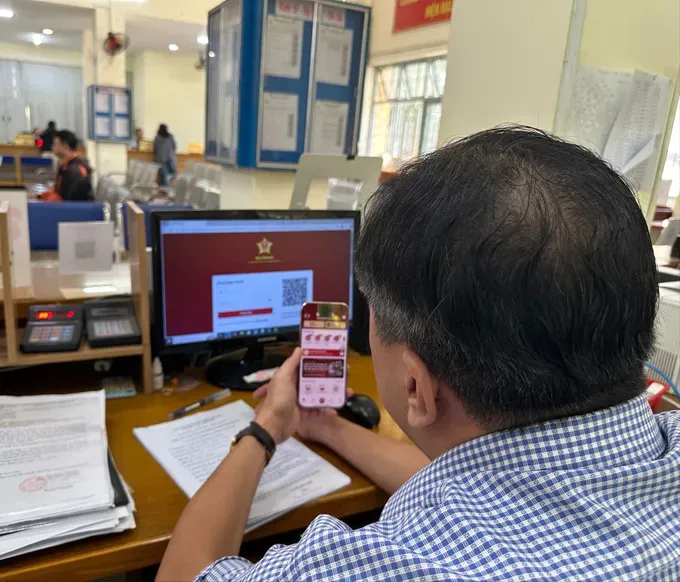
Several localities in HCMC are already getting the ball rolling. They’ve begun implementing the new online-only system for receiving applications and issuing construction permits, specifically for privately-owned, individual homes.
Tran Dinh Toan, a resident of Thong Tay Hoi Ward, commented that the new system is a welcome change. While picking up the final paper copy of his permit at the ward People’s Committee, he explained that the entire submission process was handled online.
After he had all his documents in order, he simply uploaded them to the National Public Service Portal. “About four or five days later, a ward official called me to schedule an on-site inspection of the property,” he recounted. “And just three days after that, I got the call to come pick up the physical permit.” He also noted that if residents don’t want or need the official paper copy, they’re free to just print the permit themselves directly from the software.
“When you submit online, you’re pretty much guaranteed not to miss a deadline,” Doan said. “It helps people and businesses track the whole process, which boosts transparency. But at the end of the day, it just saves time and money. That’s the clearest benefit.”
Pham Thanh Tuan, a resident of Hiep Binh Ward, echoed that sentiment. He argued that the online process is definitely more convenient than the old way. Residents, he explained, just need their design drawings and ownership documents on hand, which they can then upload straight to the portal. “After that, you just wait about 7 to 10 days for the permit,” he said. “If the application is missing something or needs a correction, the case officer just returns it digitally with instructions.”
This is a stark contrast to the old, in-person method. “If you submitted directly, you had to bring notarized copies and the originals for comparison,” Tuan recalled. “And if there was a mistake, you wouldn’t find out until the 11-day return date, then you’d have to start the whole process over. It was a huge waste of time.”
Officials on the front lines, like Head Dang Cong Tuan of the Economic-Infrastructure-Urban Department for Thong Tay Hoi Ward, provided some administrative context. He explained that the permit software used to be run through HCMC’s own online public service portal. “However, everything now follows the general procedure via the National Public Service Portal,” he said.
This digitization, he noted, is a clear win for state management. “Digitized data will make it much easier for agencies to look up, link, and store information. In the long run, building a national database on construction will be a critical foundation for urban planning and management.”
He did concede there have been growing pains. “Here at the ward, our permit officers were pretty overwhelmed in the initial phase. They really had to focus to ensure they met the deadlines for residents.” While he believes the online process is a clear benefit, he cautioned that it’s not a silver bullet. “To properly manage construction order,” he said, “the most important thing, at the end of the day, is still the post-permit inspection work.”
Vice Chairman Pham Van Hung of the Hiep Binh Ward People’s Committee confirmed his ward is all-in, receiving 100 percent of construction permit applications online, and critically, trying for all applications to be returned to residents on time. It’s been a busy period. Since the recent administrative merger, Hiep Binh Ward has reportedly processed 135 construction-related files, including 90 new permits, 31 permit adjustments, and 3 extensions.
But, like his counterpart, the Vice Chairman admitted it hasn’t been easy. “In the beginning, our staff was under a lot of pressure,” he said, “They had to work Saturdays and Sundays just to keep up and meet the deadlines.” The biggest bottleneck, it appears, is incomplete data. “Right now, the data for planning, construction, just aren’t fully integrated yet,” he explained.
“The former Thu Duc City, for example, had previously rolled out an online planning information database. But after HCMC implemented the new two-tier local government model, these data pages haven’t been updated for the newly established wards,” he continued.
This, he says, is where the difficulty lies. Ward officials are stuck performing manual operations, which slows everything down. The ideal solution is clear. “If we had integrated permit software, an officer would just need to input the land’s location, and all the information like construction density, height limits, setback requirements would just pop up. Then, they’d only need to cross-reference that with the land use certificate. It would be both convenient and incredibly fast,” the Vice Chairman commented.


